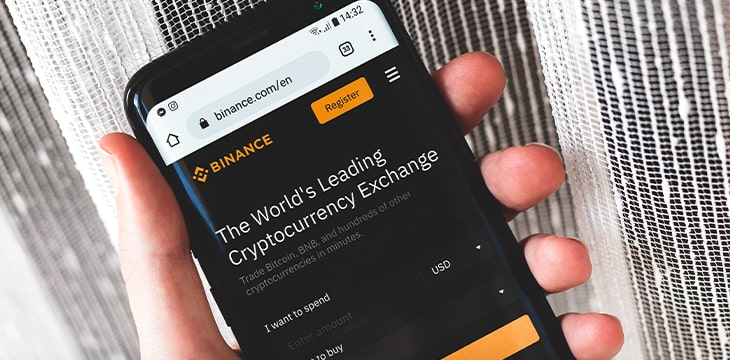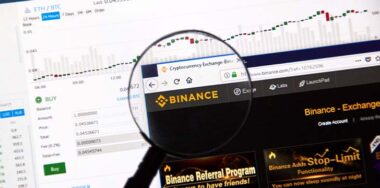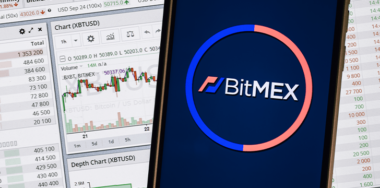| Getting your Trinity Audio player ready... |
Binance is making a backdoor move into Japan while its botched attempt to make a similar move into the United Kingdom isn’t stopping local courts from putting the digital asset exchange in the hotseat.
On Wednesday, Binance announced that it had acquired 100% of Japan’s Sakura Exchange Bitcoin for an undisclosed sum. Binance claimed that its acquisition of Sakura, which is registered with the Japan Financial Services Agency (JFSA), means “Binance enters the Japanese market” and represents “Binance’s first license in East Asia.”
Binance was likely enticed by Japan’s recent efforts to relax restrictions on the digital asset sector, as well as proposals in Japan to allow exchanges greater freedom in choosing which fly-by-night tokens to list.
The deal announcement stated that Binance was “committed to enter Japan under regulatory compliance.” (Ahem.) In June 2021, Japan’s Financial Services Agency (FSA) issued a public warning that Binance wasn’t registered to do business in the country. The FSA warning was the second such missive, following up on a 2018 announcement that Binance evidently chose to ignore, despite CEO Changpeng ‘CZ’ Zhao declaring at the time that Binance would work with regulators to obtain a local license.
Typically, Wednesday’s announcement quoted Takeshi Chino, the new GM of Binance Japan, saying his group would “actively work with regulators to develop our combined exchange in a compliant way for local users.” Sakura’s CEO Hitomi Yamamoto comically added that “Binance’s strong compliance system will contribute to building a more compliant atmosphere for users in Japan.”
In reality, Binance’s ‘strong compliance system’ is about as real as Godzilla, as the cryptocurrency exchange has achieved market dominance by effectively running in the opposite direction of regulation until backed into a corner.
Given Binance’s history of preaching compliance from the pulpit while fiscally rogering regulators behind the curtain, it will be interesting to see how long Binance’s Sakura ‘acquisition’ holds. Recall that Binance made a similar pronouncement regarding its acquisition of Indian exchange WazirX, only to deny the deal had been consummated after Indian authorities caught WazirX laundering cash for Chinese criminal groups.
Stop covering for crooks
In the U.K., Binance’s alleged commitment to working with legal checks and balances is being put to the test after a London High Court ordered Binance and five other exchanges—including Coinbase (NASDAQ: COIN), Kraken and Luno—to submit info on customers linked to the theft of nearly US$11 million.
The Financial Times reported that the ruling came in response to a legal action brought by an unspecified U.K.-based exchange that was hacked in 2020. The exchange, which wasn’t required to publicly reveal its identity to prevent alerting the cyber-thieves that the hunt was on, tracked $1.7 million of the stolen BTC, XRP, USDT and ETH to 26 accounts “owned or operated by one of the six exchanges” cited in the ruling. The court is seeking customer information—names, bank accounts and financial card details—subject to some redactions.
The ruling relies on new regulations that allow U.K. courts to compel documents from companies based outside the country. In this case, the court declared that it was “impractical and contrary to the interests of justice to require a victim of fraud to make speculative applications in different jurisdictions” in pursuit of their stolen assets. The court added that the six exchanges needed to act “before the scent goes colder.”
While Binance isn’t licensed to do business in the U.K., it has entered into ‘strategic partnerships’ with U.K.-licensed payment processors that led the U.K.’s Financial Conduct Authority (FCA) to express alarm at Binance’s repeated efforts to gain ‘back door’ entry into the market. The FCA issued similar warnings last year and more recently concluded that Binance’s reluctance to play by the rules meant the company was “not capable of being effectively supervised.”
It remains to be seen whether Binance will comply with the U.K. court ruling. Bear in mind that, CZ previously claimed to want to “establish a presence in the U.K. and serve U.K. users in a fully licensed and fully compliant manner.” That was one year and many additional FCA warnings ago with no direct Binance licensing to date, so, if we’re the individuals whose digital assets were stolen and are now sitting comfortably on Binance, we wouldn’t hold our breath.
Proof of Something
It’s perhaps fitting that Merriam-Webster picked ‘gaslighting’ as its word of the year, given CZ’s ongoing efforts to paint himself and his company as paragons of ‘crypto’ virtue (even more so now that FTX’s Sam Bankman-Fried is officially down for the count).
The latest plank of this charm offensive was Binance releasing its ‘proof of reserves’ (PoR) to deflect suspicion that its balance sheet was as wonky as the one that ultimately brought down FTX. Starting with the BTC token, Binance released a Merkle tree-based report that claimed the exchange held BTC equal to 101% of the total amount of BTC held in its customers’ accounts.
However, this system was almost immediately attacked by Jesse Powell, the outgoing CEO of the U.S.-based Kraken, who slammed Binance’s claim as “either ignorance of intentional misrepresentation. The merkle tree is just hand wavey bullshit without an auditor to make sure you didn’t include accounts with negative balances. The statement of assets is pointless without liabilities.”
I'm sorry but no. This is not PoR. This is either ignorance or intentional misrepresentation.
The merkle tree is just hand wavey bullshit without an auditor to make sure you didn't include accounts with negative balances. The statement of assets is pointless without liabilities. https://t.co/b5KSr2XKLB
— Jesse Powell (@jespow) November 25, 2022
Binance subsequently updated its PoR explanatory page to say that it publishes “internal audits, whereupon third-party auditors help to verify them using cryptographic techniques to prove users’ funds are securely held in company reserves.”
Trouble is, Binance’s PoW explanatory page cites “traditional third-party audits by companies like Armanino” as one method of proving asset reserves. The California-based Armanino LLP touts itself as “the only accounting firm to issue Proof of Reserve attestations with customer account verifications via Merkle trees.”
For the record, Armanino is the same outfit that not too long ago referred to SBF as ‘buddy!’ and attested to the righteousness of FTX’s U.S.-based exchange FTX US. (John J. Ray III, who was appointed CEO of FTX to steer it through bankruptcy, recently stated that he had “substantial concerns as to the information presented” in the audits of FTX.) Armanino also has ties to the likes of Kraken, Nexo and other companies in this space and was recently described by the Wall Street Journal as ‘crypto industry cheerleaders.’
https://twitter.com/ArmaninoCrypto/status/1468602958694666246
This would also be the same Armanino that the Public Company Accounting Oversight Board (PCAOB) inspected in 2018. The PCAOB determined that, in one of the two audits under review, Armanino had “issued an opinion without satisfying its fundamental obligation to obtain reasonable assurance about whether the financial statements were free of material misstatement.”
CZ was quoted in the WSJ article declining to identify Armanino as the auditor behind its PoR attestation in part because “there is a bit of scrutiny there” following FTX’s bankruptcy.
You really can’t make this stuff up, but on Wednesday, Binance confirmed that it had hired accounting firm Mazars to audit its PoR. Mazars handled Donald Trump’s financial books until February, when it abruptly cut ties with the former president. At the time, Mazars declared that the Trump Organization should “no longer rely upon” a decade’s worth of financial statements that Mazars had prepared for Der Donald.
A clear sign of problems
Meanwhile, the digital hoops that Binance keeps jumping through to allegedly prove it’s telling the truth are only serving to further muddy the waters. This week, Binance transferred over $2 billion in BTC to an unknown wallet, which CZ brushed off as “part of the Proof-of-Reserve audit. The auditor require [sic] us to send a specific amount to ourselves to show we control the wallet. And the rest goes to a Change Address, which is a new address.”
While the UTXO explanation makes sense, many observers were quick to point out that showing control over a particular wallet address need only have required Binance to sign a message from that address. In response, CZ claimed that “not all wallet infrastructures support signing.”
https://twitter.com/cz_binance/status/1591690261029130240
It’s worth remembering that this is the same CZ who, just a few weeks ago, warned his millions of Twitter followers that “if an exchange have [sic] to move large amounts of crypto before or after they demonstrate their wallet addresses, it is a clear sign of problems. Stay away.”
Situation All F’d Up
In early November, as part of CZ’s attempts to rebrand himself as blockchain’s protective big brother, he announced that Binance had “topped up” its Secure Asset Fund for Users (SAFU) to $1 billion. The SAFU program is described as “an emergency insurance fund that was established by Binance in July 2018 to protect users’ funds.” (Protect them from what is never specified.) Following FTX’s collapse, CZ announced that Binance had “allocated ANOTHER $1 billion to the industry recovery initiative.”
However, even before this extra billion was tossed on the pile, skeptics had raised concern about the nature of the assets underpinning this rescue fund. The original $1 billion was comprised of three assets, the largest slice of which (44%) was BNB, Binance’s in-house, made-of-thin-air token. The second-largest slice (32%) consisted of BUSD, the Binance/Paxos-partnered stablecoin, with the rest (24%) held in BTC.
Critics have noted that, while FTX was a house of cards that would have collapsed for any number of reasons, the fatal blow was the publication of a balance sheet belonging to FTX’s affiliated market-maker Alameda Research that showed an unhealthy reliance on FTX’s in-house token FTT. Seeing an opportunity in this crisis, CZ accelerated FTX’s demise by announcing he would dump Binance’s $530 million stash of FTT, which sparked a tsunami of withdrawal requests that FTX couldn’t fulfill.
CZ claims that the difference between FTX’s reliance on FTT and Binance’s use of BNB is that “Binance has never used BNB for collateral, and we have never taken on debt.” (Binance is a private company that isn’t required to publish quarterly financial reports, so we’ll have to take CZ’s word on that.)
Meanwhile, CZ continues to shill BNB by pointing out its fiat value growth since the token’s initial coin offering (ICO) in 2017. Elsewhere, the U.S. Securities and Exchange Commission (SEC), which views most ICO tokens as unregistered securities, is reportedly probing Binance’s use of BNB. Will all end well, we’re not convinced.
Could Binance need rescuing soon?
In mid-November, CZ announced the formation of “an industry recovery fund, to help projects who are otherwise strong, but in a liquidity crisis.” Among the likely targets of CZ’s largesse are Voyager Digital, the bankrupt lending platform whose remaining digital assets were won at auction by FTX US but have since been put back on the block.
CZ’s usurpation of the ‘John Pierpont Morgan of crypto’ role previously held by FTX’s Sam Bankman-Fried should give everyone pause. In hindsight, SBF’s benevolent bailout-king performance was merely a ploy to gain access to struggling companies’ remaining assets and plug the holes on FTX/Alameda’s balance sheet. Binance has faced rumors of its own fiscal challenges, and its facile attestations of its reserves haven’t halted this chatter.
Remember how FTX was constantly seeking to raise funds despite claims of making billions? Well, Bloomberg reported that CZ’s recent trip to Dubai saw him pitching local fat cats—including UAE national security adviser Sheikh Tahnoon Bin Zayed—on contributing to his ‘recovery fund.’ CZ denied the report with a one-word tweet, later explaining that he was “going with a loose approach where different industry players will contribute as they wish.”
Listening to CZ’s repeated warnings that other players in this space have skeleton-filled closets, one hears echoes of SBF’s warnings from earlier this year some exchanges are “too far gone” to save, or his claim that the mechanics of so-called ‘decentralized finance’ are indistinguishable from Ponzi schemes. We know now that SBF was projecting his own criminality onto others. What horrors will we acknowledge only in hindsight should Binance’s other shoe drop with a thud?
Winter is here, regulation is coming
On Tuesday, U.S. Senator Ron Wyden (D-OR) issued letters to Binance, Bitfinex, Coinbase, Gemini, Kraken and KuCoin requesting answers on a series of questions. These range from how customer funds are separated from operating capital, what portion of asset reserves are held in “exchange-issued tokens or tokens issued by any of the exchange’s affiliates or subsidiaries” and whether the exchanges engage in trades “that may disadvantage customers’ trades in favor of its own positions.” Interestingly, Wyden also seeks a list of “any real estate acquisitions made by the exchange or any of its executives or directors financed by customer funds.”
Similarly, Wednesday saw U.S. Senate Banking Committee chair Sherrod Brown (D-OH) ask Treasury Secretary Janet Yellen to help craft legislation that would “create authorities for regulators to have visibility into, and otherwise supervise, the activities of the affiliates and subsidiaries of crypto asset entities.” Contrary to the wishes of crypto bros like SBF, who lobbied hard for the Commodity Futures Trading Commission (CFTC) to handle oversight, Brown sees a greater role for the far less permissive and far better equipped SEC.
CoinGeek has long predicted that regulation is coming for the digital asset sector, with ominous implications for those ‘crypto bros’ who continue to insist that they’re somehow above the law. The crash that started this spring with the collapse of Luna/UST and quickly went on to claim additional casualties including Three Arrows Capital, Voyager, BlockFi, Genesis and FTX is far from over. But the regulation-averse party is well and truly over.
Follow CoinGeek’s Crypto Crime Cartel series, which delves into the stream of groups—from BitMEX to Binance, Bitcoin.com, Blockstream, ShapeShift, Coinbase, Ripple,
Ethereum, FTX and Tether—who have co-opted the digital asset revolution and turned the industry into a minefield for naïve (and even experienced) players in the market.
New to blockchain? Check out CoinGeek’s Blockchain for Beginners section, the ultimate resource guide to learn more about blockchain technology.








